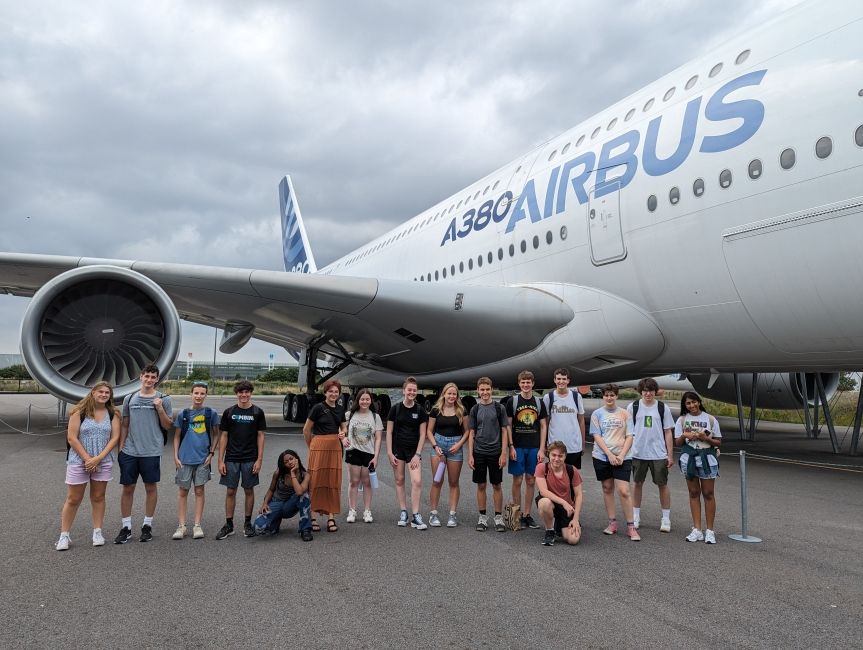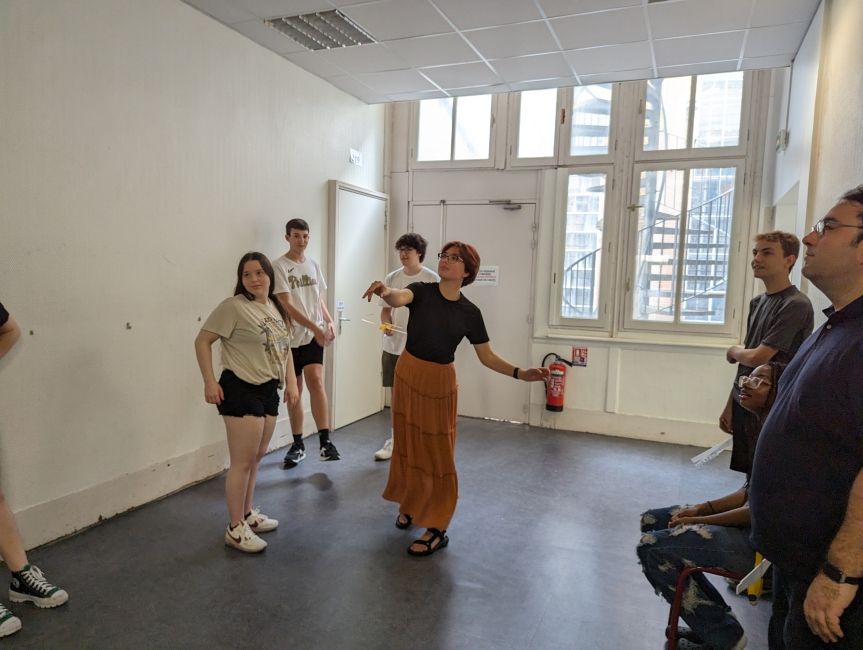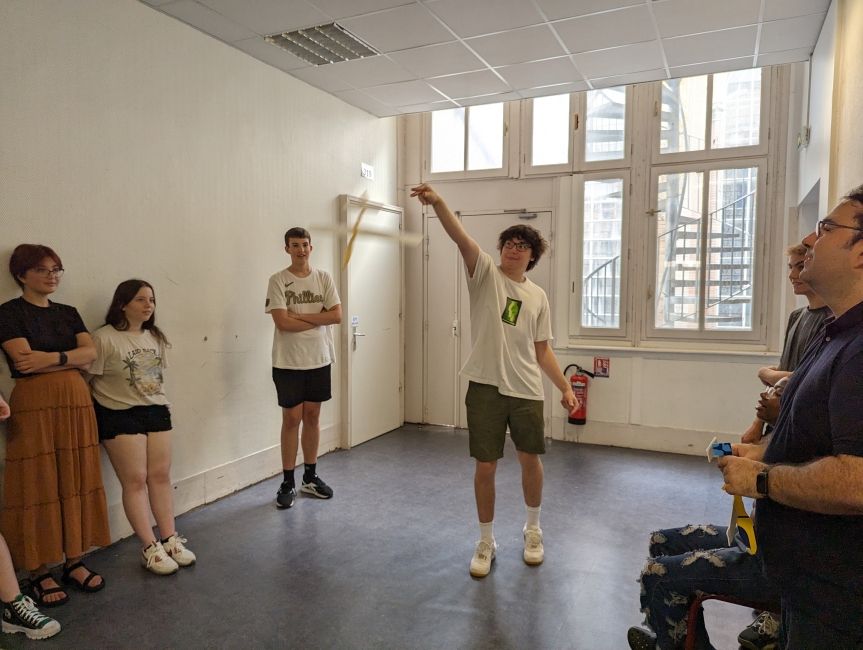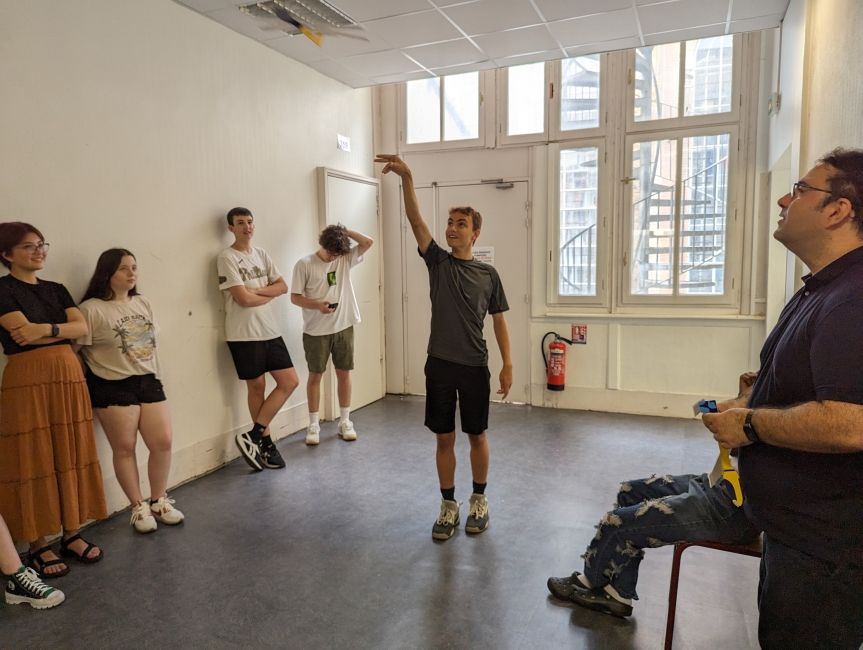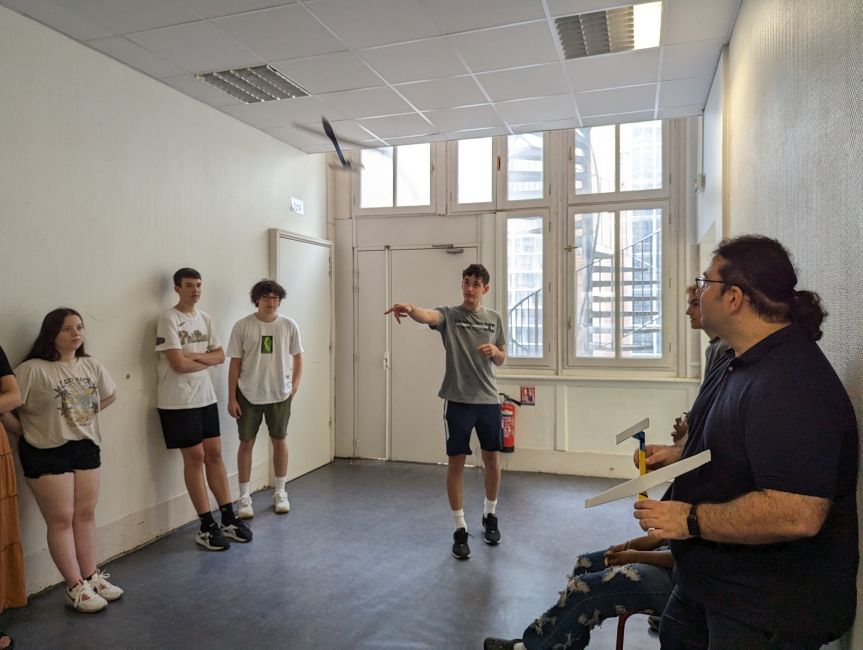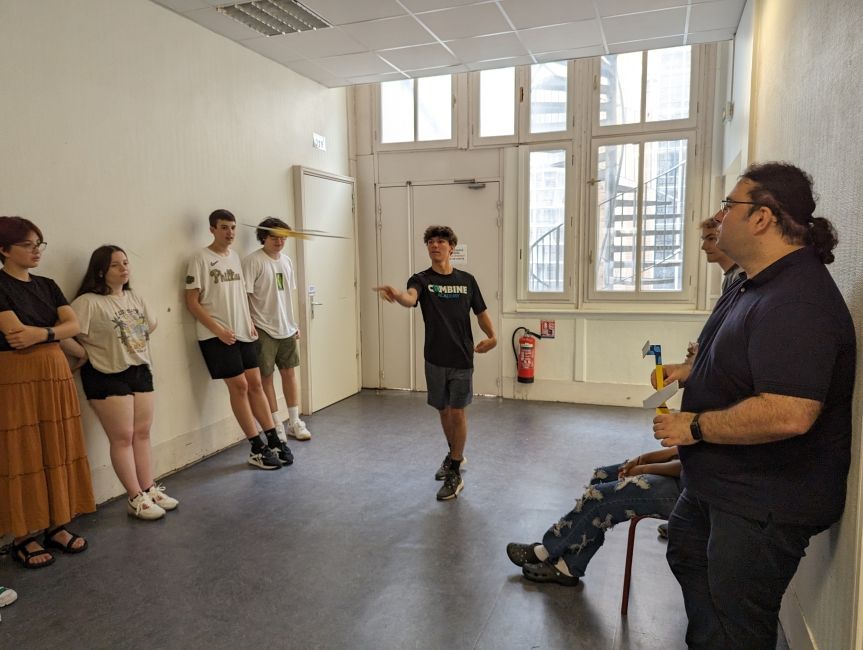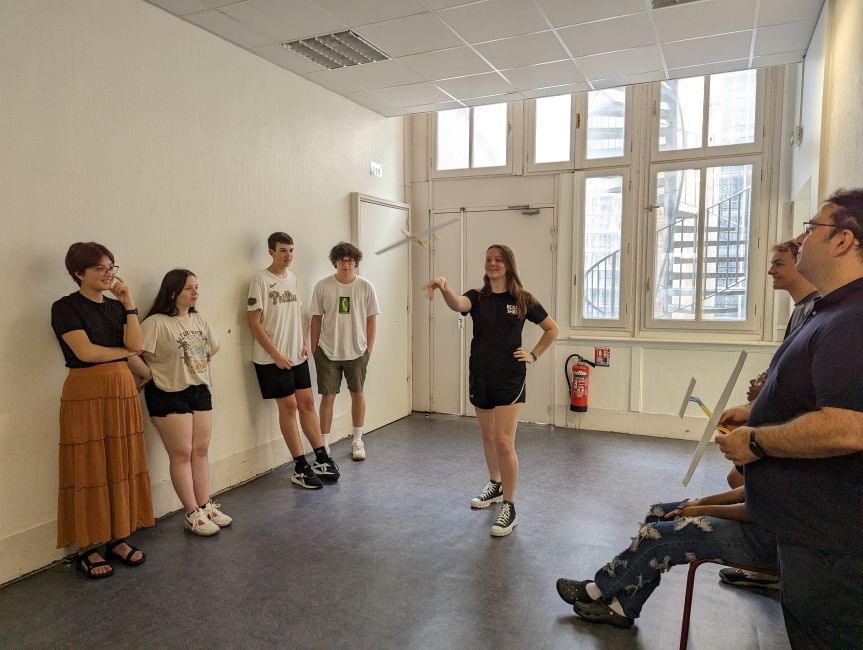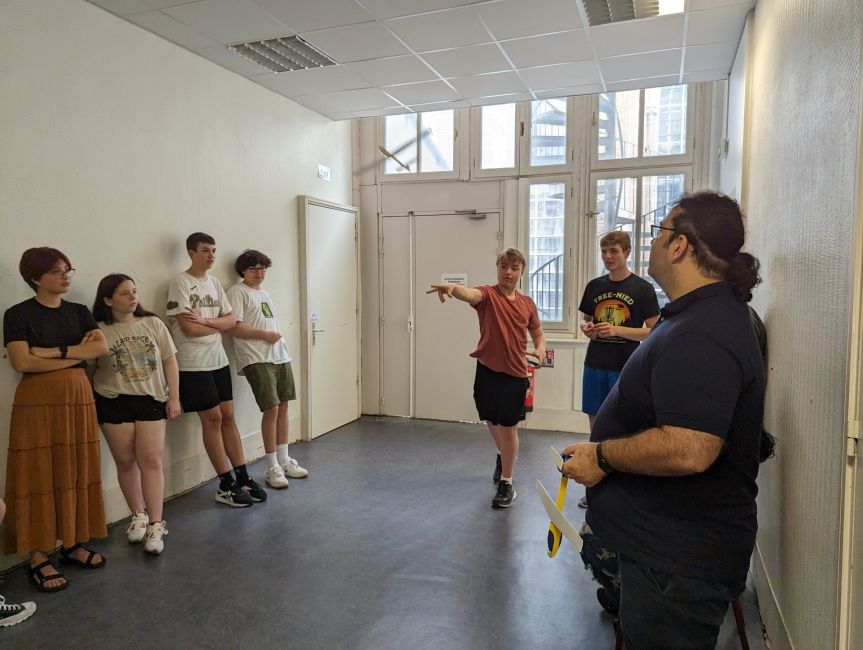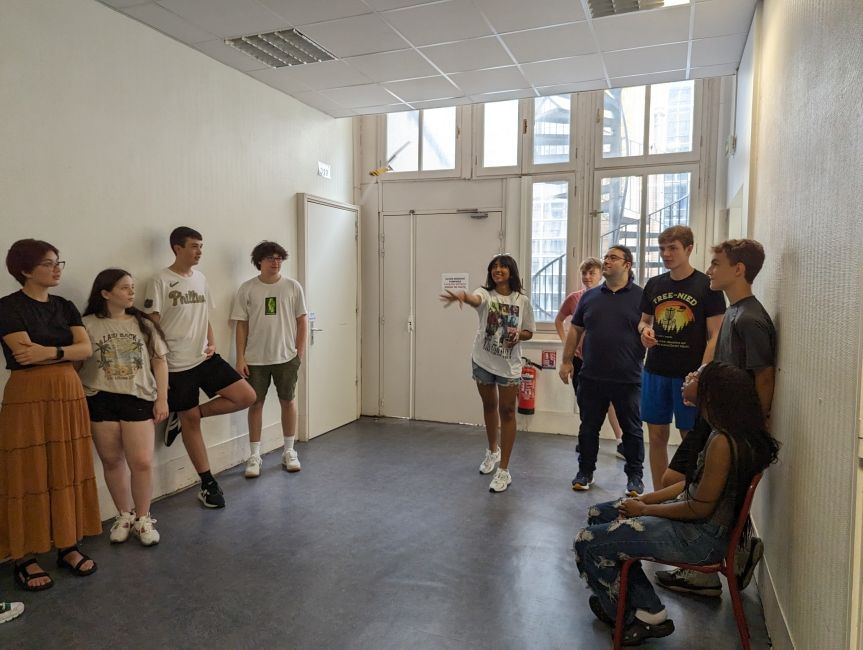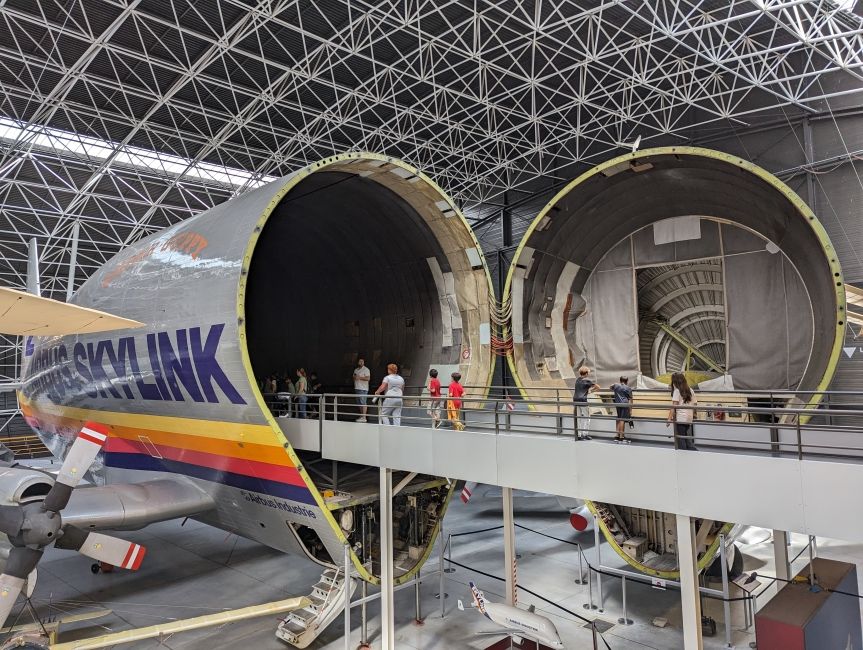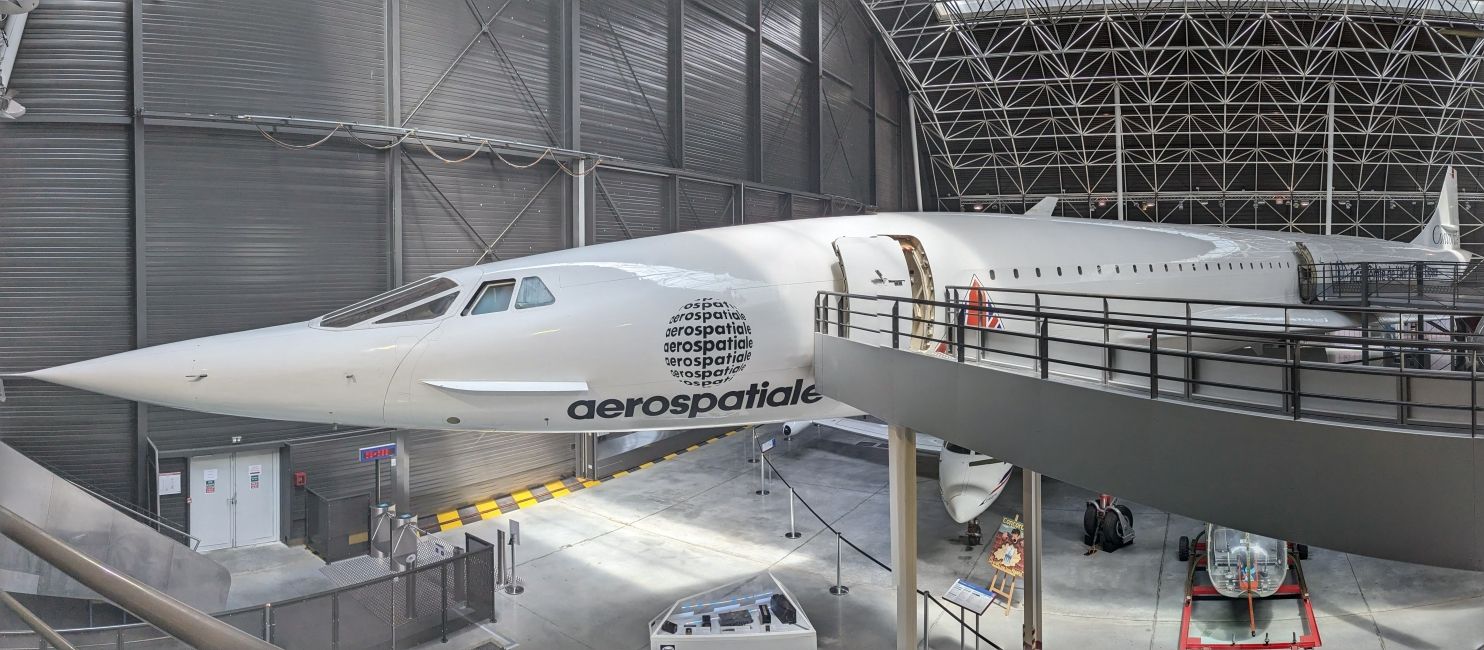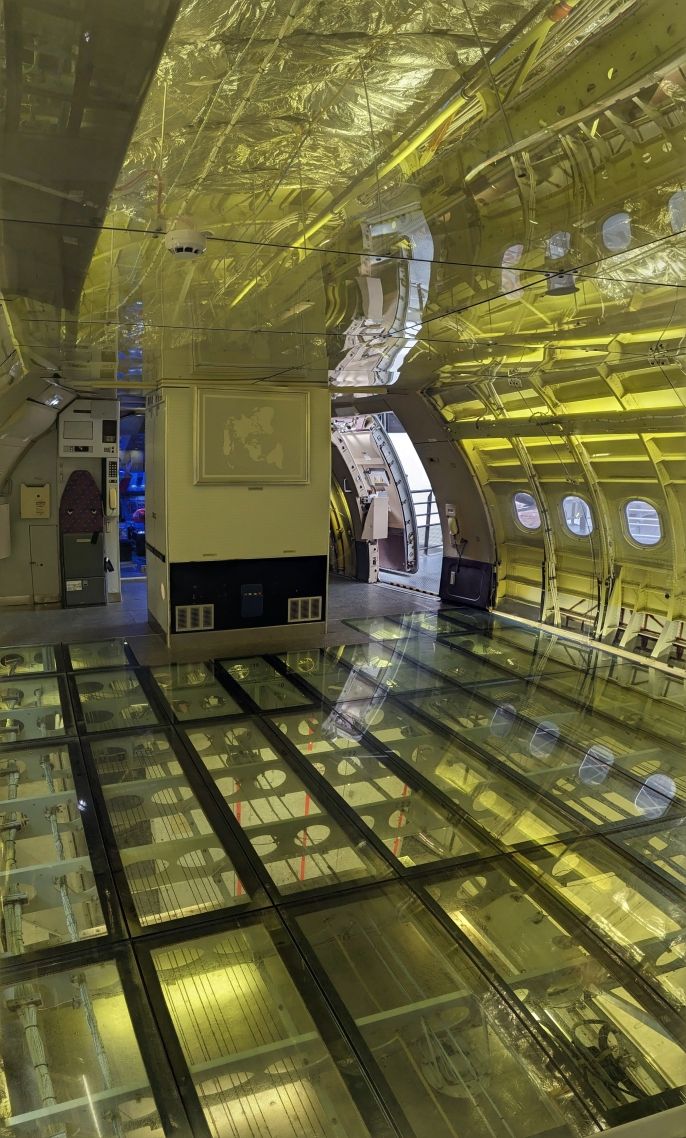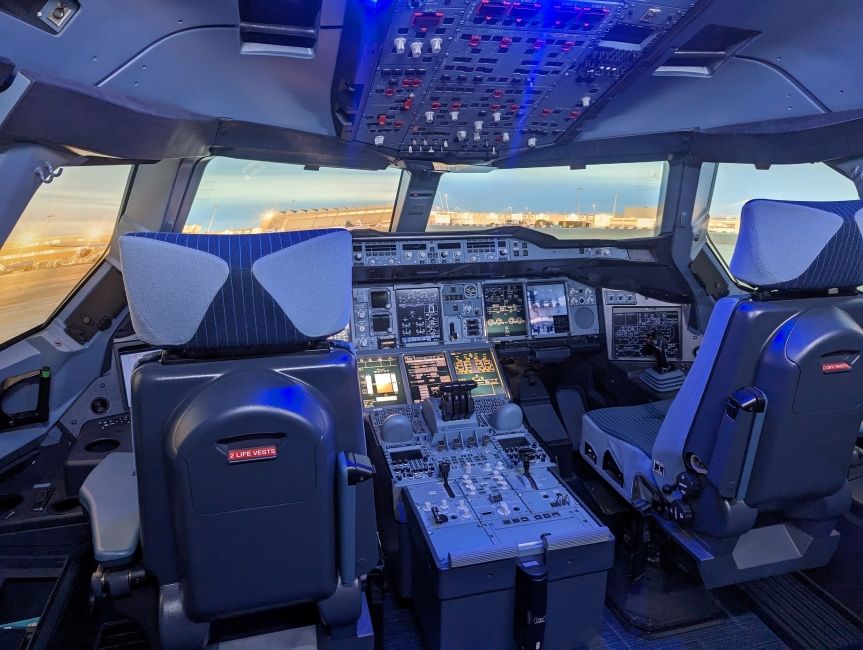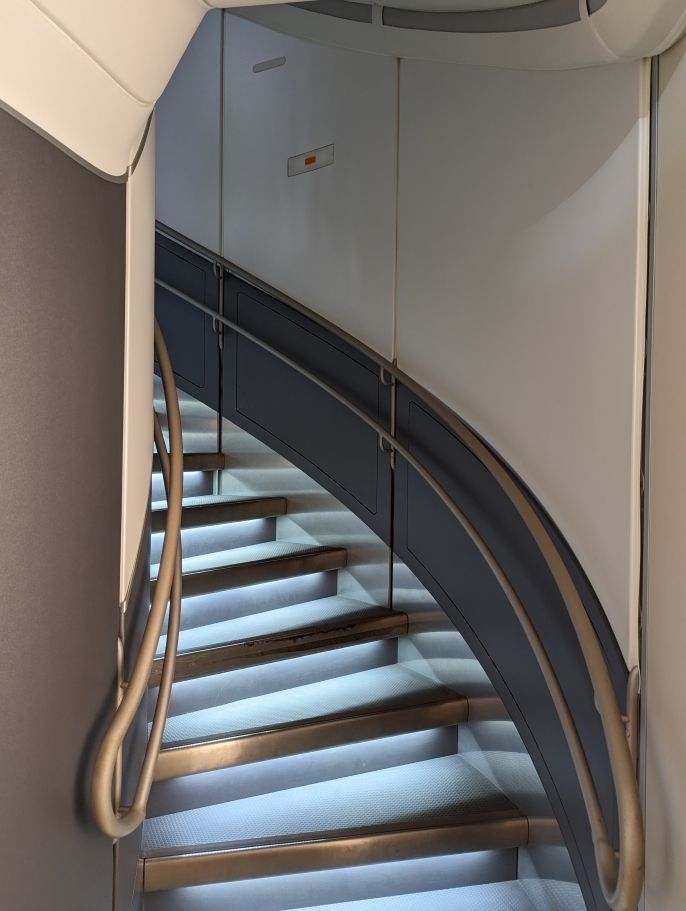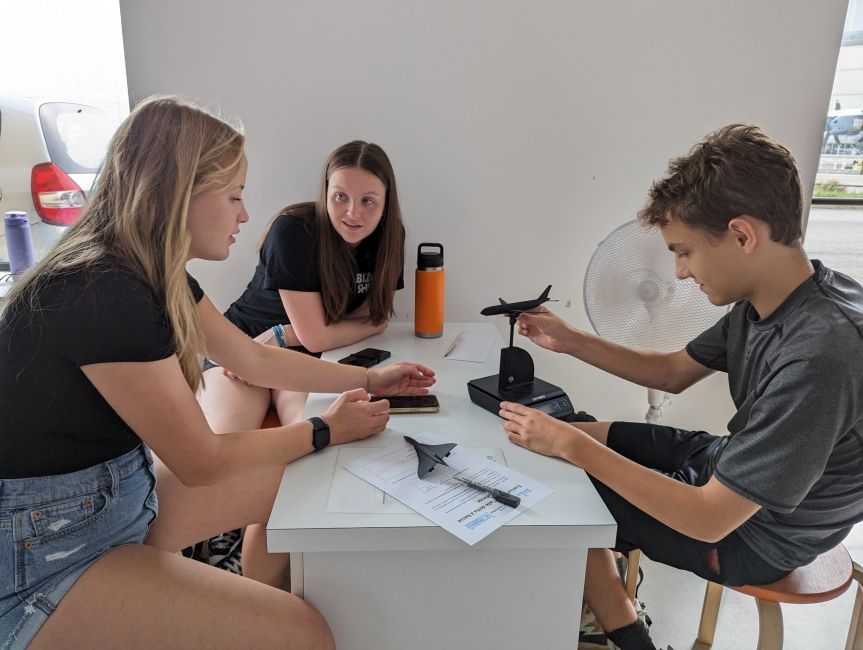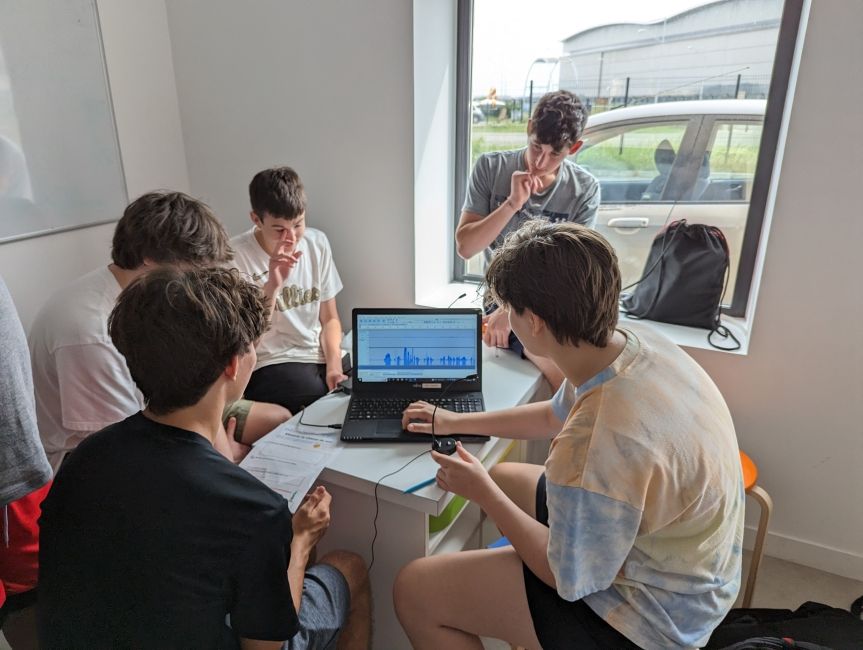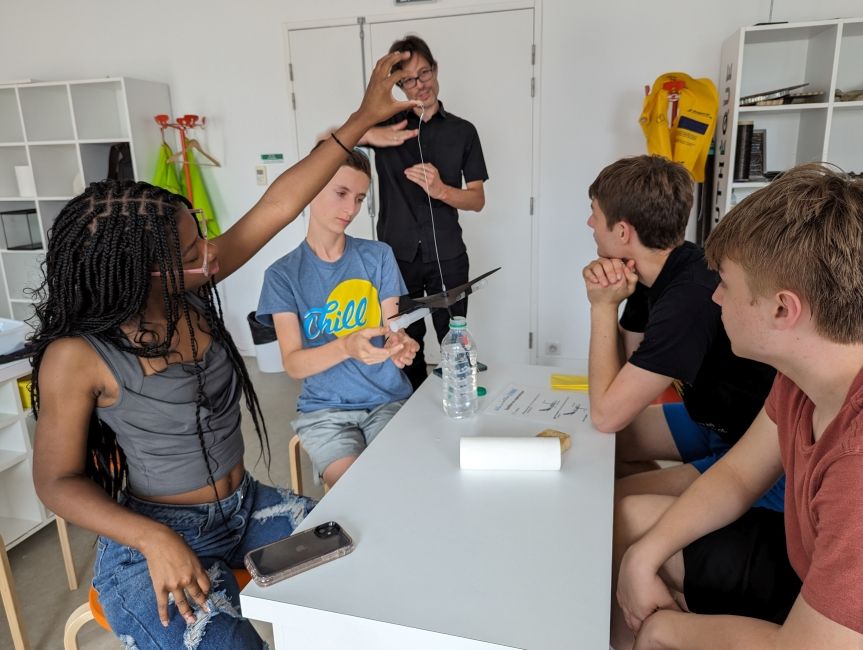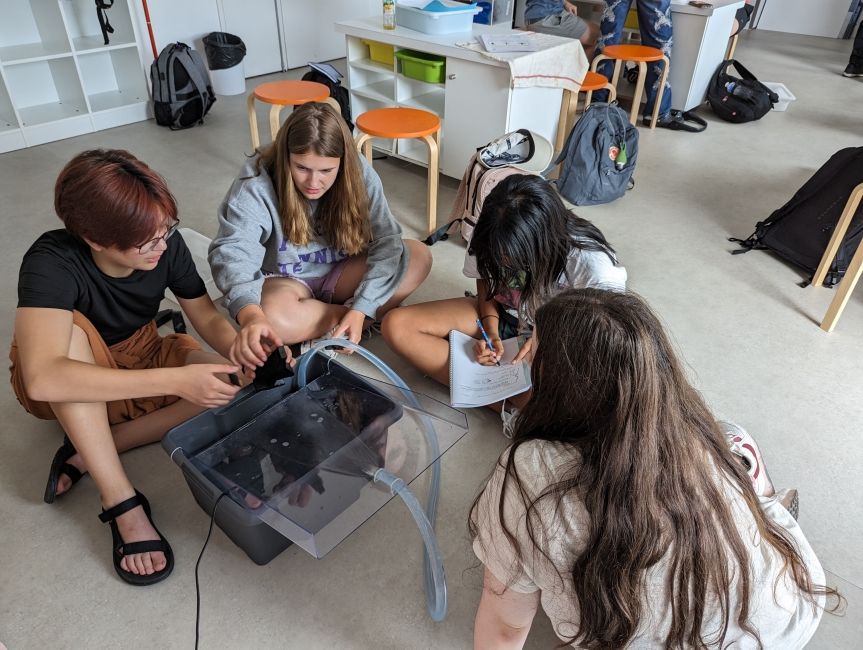A Day of Experimentation
Our first day of learning was full of experimentation! We began the day building gliders, with the students first trying out different designs, then receiving some tips about how to increase performance. After updating the designs, the students performed their final tests, and had much more success!
We then learned about the history of aviation and flight, followed up by a guided tour at Aeroscopia, which is a museum full of amazing planes! When entering the museum hangar, we were immediately greeted by the enormous Super Guppy - the airplane made to carry other airplane parts! We then learned a bit about (and saw) the Bleriot XI, which was the first aircraft to cross the English Channel. Following this, we were able to walk inside and through a Concorde - not just any Concorde, but one of the original test vehicles, which was later used for French national presidential transport.
After leaving the Concorde, the group toured the A300, which was the first commercial aircraft made by Airbus, and was a widebody jet introduced in 1974. The vehicle we tourned was really impressive to walk through, not only because of its large size for the time, but also because this particular airplane was cut open to see through the floor, into the walls, etc. It was amazing to see how many wires and cables were present to make the aircraft work.
We then concluded our trip through the museum with a visit to the A380! This plane is the world's only true double decker plane, and the sheer size was amazing. Walking through the interior, the sections with seats removed hardly felt like an airplane. It was incredible how massive this airplane is, and was quite cool to walk up and down staircases to access the upper level. The cockpit was also quite futuristic looking, and without a steering wheel - all control is done through a joystick. I didn't realize this, and was surprised to learn that the captain controls the entire plane with a joystick in his left hand (copilot with a right-handed joystick). All of my fellow right-handers, I think a career aspiration of a copilot rather than pilot might make more sense for us - quite a lot of pressure to steer a plane with our non-dominant hand!
After a short break, we concluded our day with a workshop all about supersonic flight and discovering through experimentation the engineering design decisions made for a supersonic vehicle. The students split into teams, each with a different experiment to conduct and then reporting out to the full group. The first team calculated experimentally the speed of sound (which could be used to find a vehicle's Mach number). Using two offset microphones and measuring the time delay, they calculated the speed of sound to be 333.3 m/s, which was off from the real value by only 3% - nice work! The next group studied the role that the location of fuel has on a vehicle's center of gravity, and how adjusting this during flight can be beneficial. We learned that in the Concorde, the airplane's center of gravity changed by up to 2 m during flight! The third group studied the impact that having a delta wing has on the amount of lift generated, including different angles of attack. The group concluded that the delta wing had a worse performance than a traditional airliner. Because of this worse performance, it seemed a bit perplexing that the Concorde would have a delta wing, but that was the perfect segue into the final group's experiment - the shape of the aircraft body. This group studied different aircraft profiles and how they interacted with the shape of the fluid passing around the body. The results showed that the delta wing allowed for a much more streamlined flow of the fluid, and prevented the aircraft's body from passing beyond the shock wave generated when exceeding the speed of sound. This showed that although the delta wing generates less lift, it allows for significantly less drag, which is why that shape was ultimately chosen for the Concorde design.
Overall, this day was full of learning and experimentation, and the students were able to discover many aerospace princples. It was a ton of fun to be able to learn through these hands-on experiences, and really amazing to be able to walk through so many historically important aircraft. It was a great start of our learning journey!
Related Posts
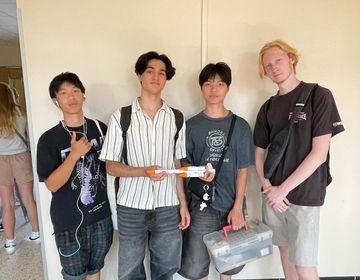
Au revoir Toulouse!
This morning, Session II Aerospace Engineering students departed with hearts overflowing with joy and memories to treasure for a lifetime! As the sun rose, the excitement in the air was... keep reading
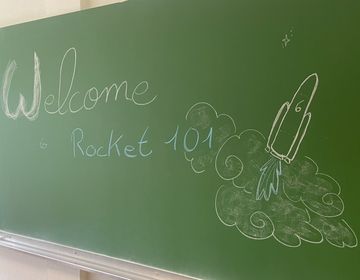
Exploring Aerospace Engineering in Toulouse, France
Toulouse, France is often called the aerospace capital or “Space City” of Europe, and for good reason. Home to major aerospace companies like Airbus and renowned research institutions, this city... keep reading
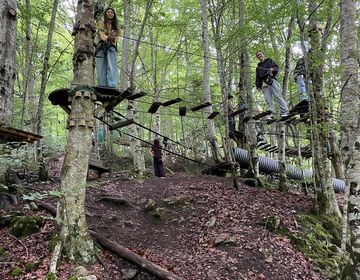
Akrobranch in the Pyrénées
Toe-tapping on wires 40 feet above thundering waterfalls in the foothills of the Pyrénées mountains... music to the ears of the CIEE Aerospace Engineering crew! This past weekend the students... keep reading
